This is our first backpacking route in Africa and it also acts as a mini backpackers guide for Morocco with info on getting in, getting around and the cost of travel in the country. It takes in some of the best cities to visit as well as smaller towns either side of a quick dive into the Sahara Desert. Scroll down for our 3 week Morocco backpacking route.
Table of Contents
Backpacking Morocco – Route Info
TIME NEEDED – 3 weeks
3 weeks is a sufficient amount of time for a backpacking trip in Morocco unless you have any specific aim other than travelling around and visiting the most interesting and popular places. Most of the destinations on this route can be seen in a day or two. Your biggest decision may be choosing how long you want to stay in the Sahara Desert. There are two points on the route where you can get out and spend several nights in it if you so wished.
POSSIBLE SHOESTRING BUDGET – £550 | €650 | US$650
These figures are based on estimates of September 2022 prices and exchange rates. It is not an expensive country to travel in by any means and US$30/day is usually considered a safe benchmark figure for budget travel in Morocco but it’s possible to get by on less if you’re savvy. The figures above are based on that but don’t include the cost of travel in/out of Morocco.
Your costs will also depend significantly on how many organised trips you take with the Sahara trip likely to be your biggest single expense. If you are backpacking Morocco solo, you may spend slightly more than those with friends/partners as you may need to fork out for a private room in some destinations where dorm accommodation is harder to find. Read more on how much it costs to backpack Morocco!
The currency in Morocco is the Dirham. For one Euro or Dollar, you can get approximately 10.5 Dirhams as of September 2022.
MOROCCO BACKPACKING JOBS & WORK EXCHANGES
It is possible to find volunteering projects to get involved with in Morocco and it’s a good option for anyone with more than three weeks to spare. For example, there are lots of hostels in Morocco who are looking for volunteers and will offer food and beds in exchange for your time. There are 40 Worldpackers work exchange opportunities in Morocco at the time of writing for their members. Use our Worldpackers coupon code to join.
SAFETY
Many people are wary about travelling to the country for safety reasons. There have been isolated incidents where foreigners have been the targets of violent crimes but you can find similar horror stories in most countries.
In truth, there are more general irritations in Morocco than outright dangers. You are likely to be approached by many people, particularly in the main tourist centres, trying to offer you unofficial tours, take you to restaurants or sell you some “flower power”. The regularity of these approaches, particularly if you’re travelling alone, can get irritating and although it may seem rude, you will have to be assertive or just outright ignore such people. Don’t let these incidents put you off Morocco or Moroccans as a whole though, as they are naturally sociable people and typically very friendly and welcoming to visitors.
In terms of tips for solo travellers, particularly female ones, staying in dorms and trying to make friends to do trips and tours with, may be a good idea if you’re worried about the safety aspect.
TRAVEL INSURANCE
The cost of travel insurance isn’t included in the budget figures above. You can get a quote in less than a minute from Heymondo who provide well reviewed international travel insurance for backpackers from all over the world.
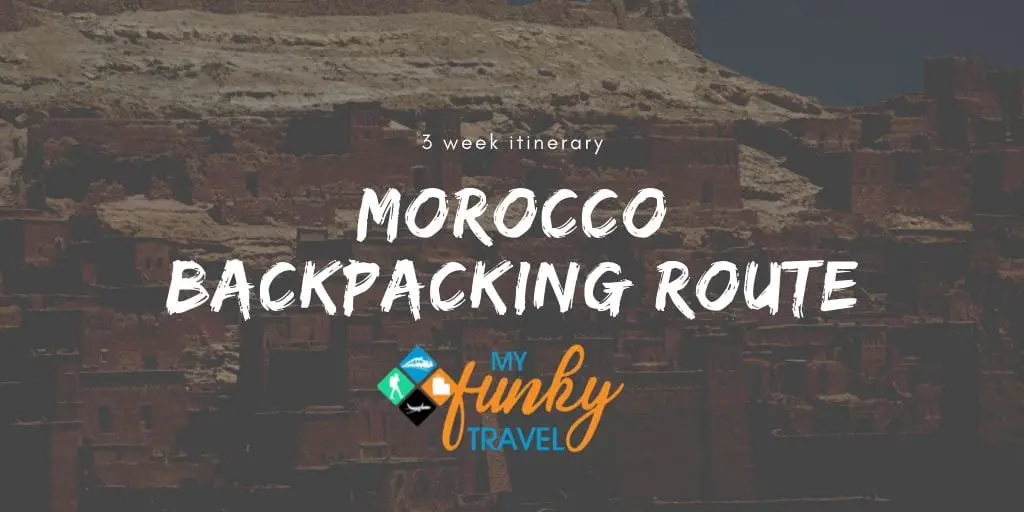
Backpacking Morocco 3 Week Itinerary
1. Tangier
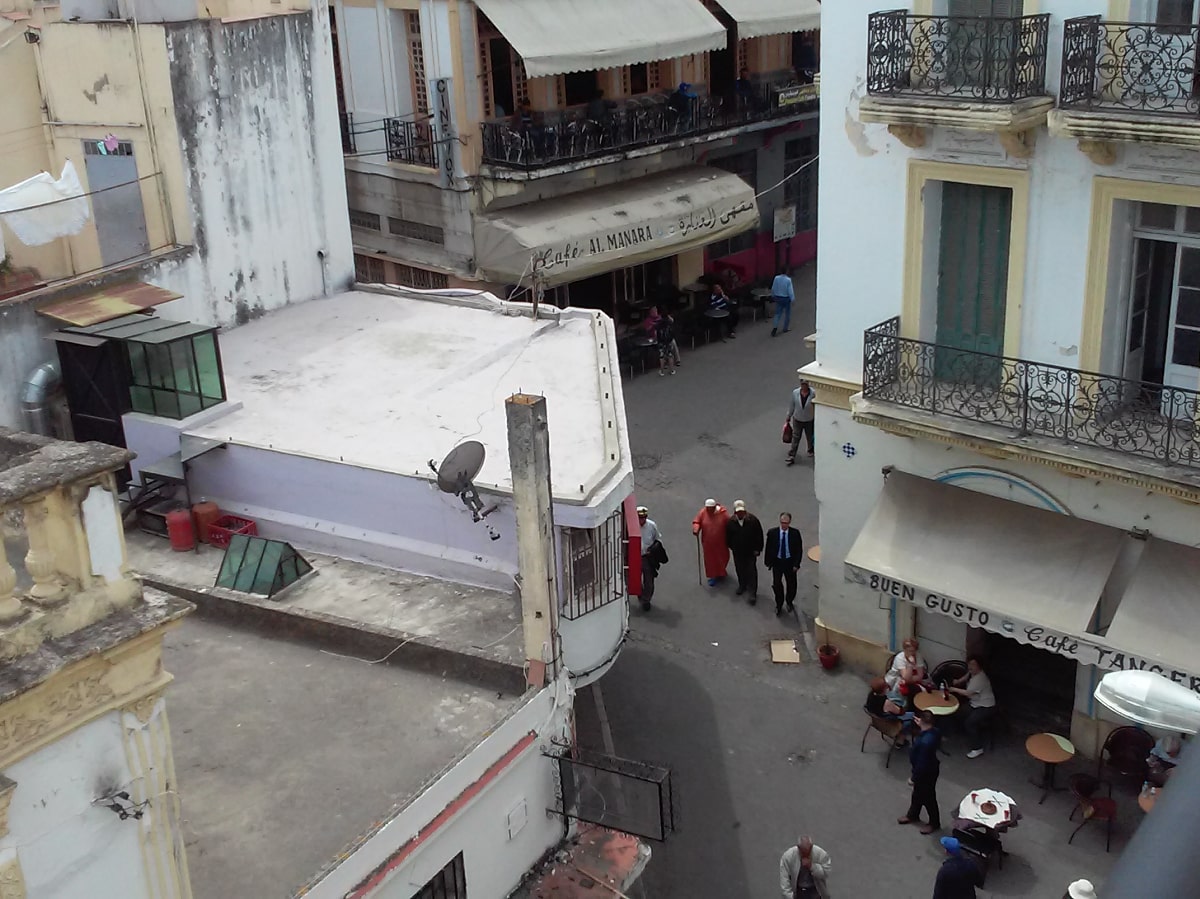
Tangier is Morocco’s main coastal gateway to Europe and the Mediterranean and has an international flavour but if you’re someone who likes a culture shock, it still represents a sudden, in-your-face introduction to Morocco and everything it represents. Its steep central streets are bustling with life, teeming with touts and full of decaying yet charming buildings that give it a really authentic feel. In short, it is a microcosm of Morocco but in terms of genuine sights the Kasbah and ancient medina are the main things to see and are located right next to each other so can easily be done in one day.
Getting from Tangier to Chefchaouen: Frequent buses serve the route and take around 2-3 hours to cover the 100 km or so between the two cities with most buses stopping in the city of Tetouan en-route.
2. Chefchaouen
Chefchaouen is a beautiful small city in Northwestern Morocco just beneath the dramatic backdrop of the Rif Mountains. It is really popular with backpackers and other nomads, some of whom are unquestionably attracted to the town for its proximity to the numerous nearby marijuana plantations. Although there are plenty of touts trying to sell hashish, which can be highly annoying, it is still a very relaxed place and known as the ‘Blue Pearl’ for the colour of its buildings. It’s worth staying a few days here and getting out to explore the Rif Mountains and nearby national park.
Getting from Chefchaouen to Meknes: Buses take about 4-5 hours to get to Meknes from Chefchaouen.
3. Meknes
Meknes is free from the hassles of some of the more popular tourist destinations as most travellers tend to overlook it in favour of nearby Fes. However this imperial city is full of interesting historical sites with plenty of palaces and mosques while at the same time it is also a good example of a flourishing modern Moroccan city. If you’re looking to shop in Morocco, the medina in Meknes is perhaps the most reasonably priced of all the cities on this route and it’s a great place to land a few bargains.
Getting from Meknes to Fes: Very close and very well connected cities, both situated on one of the most popular train routes in Morocco. Prices start at just 26 Dirhams (roughly US$2.50) and the journey only takes around 40 minutes.
4. Fez
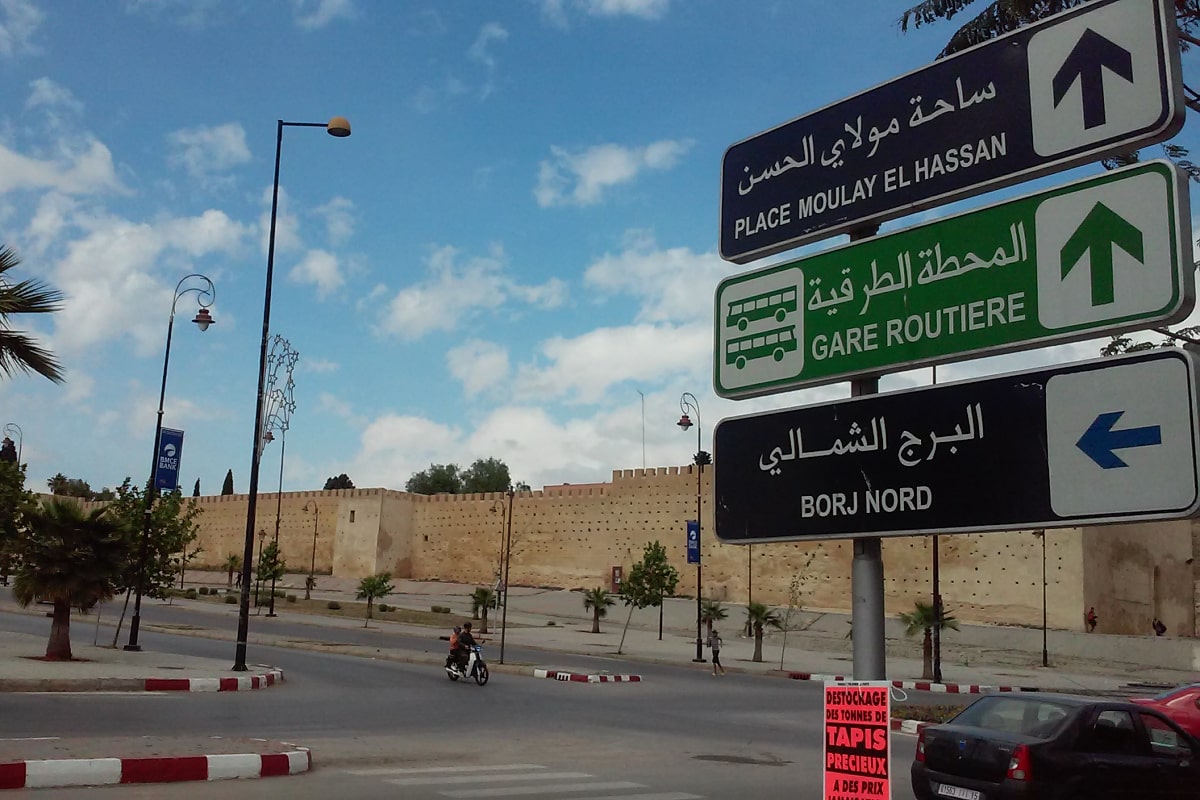
Fez is one of the real travel highlights of Morocco and one of the most underrated backpacking destinations in the Arab World. This ancient walled city is a giant maze of souks, shrines, tanneries and tombs and the only certainty when exploring the enormous medina of Fez is that you will get lost! It was the medieval capital of the country and is widely regarded as the best preserved old city in all of the Arab world so it is well worth spending a few days here.
Getting from Fez to Merzouga: It takes about 10 hours by overnight bus and is almost certainly the longest journey you’ll need to take in Morocco. There is a once-daily Supratours bus which does the route in full and can be booked easily once in the country. You shouldn’t have any problems getting seats if you book a couple of days in advance. Alternatively you can take a bus from Fez to Rissani and then take a taxi to Merzouga.
5. Merzouga, Sahara Desert
A trip to Merzouga, in the wilderness of the Sahara Desert is a must for anyone backpacking in Morocco. While Sahara trips are easily arranged from Marrakech or any of the main cities, heading all the way to Merzouga yourself is the most rewarding way to do it. The village is much deeper into the desert than a typical short trip from Marrakech will reach and given you are based in the Sahara, you have much more flexibility to do the things you want to do. In the typical multi-day tours you basically have to do everything as a tour group.
Options here include camel treks with the possibility of spending several nights in the desert, as well as off-road 4×4 or motorbike trips around the dunes. You can also simply get out and explore them on foot from Merzouga, which is a very small settlement.
Getting from Merzouga to Tinghir: At the time of research, there was one Supratours bus that leaves Merzouga in the direction of Marrakech at 8:00 a.m. each day and takes the touristic route, stopping close to the Todra Gorge. Alternatively you can take a Grand Taxi (shared taxi) to nearby Rissani for around 10 Dirhams and from there you should be able to reach Tinghir by taking a local bus. Best to ask in Merzouga for advice on this leg as most visitors do it as part of a tour group and it’s not a route locals would regularly take so options are a bit limited for independent travellers.
6. Tinghir & Todra Gorge
Tinghir is a small and fairly unremarkable place in the stunning High Atlas region of Morocco and it is a good base for exploring the spectacular Todra Gorge, which is a popular stop en-route between the Sahara and Marrakech. From Tinghir, you can take a taxi up to the gorge, which has a well marked 2-3 hour hiking trail and is also a good place for rock climbing. You can also take trips to the surrounding oasis, which is wedged between the High Atlas and Little Atlas Mountain ranges.
Getting from Tinghir to Ouarzazate: CTM Buses leave at 8:45 a.m. and take just under 3 hours to reach Ouarzazate (as of September 2022).
7. Ouarzazate
Situated at 1,135 metres above sea level but just inside the Saharan region of Morocco, Ouarzazate is another popular stop. The town is far bigger and more developed than Merzouga but the surrounding areas are far less impressive and you have to travel a long way out before you really feel like you’re in the desert. The town boasts two film studios (guided tours available) where a host of famous movies have been shot. The Atlas Studios are the most famous. For a slice of nature, nearby Oasis Fint makes for a decent hike or half-day trip.
Getting from Ouarzazate to Aït-Benhaddou: Only 30 km between the towns so it doesn’t take long but it can be a little bit complicated to get between the two by bus. Grand taxis (shared taxis) may be the best option and won’t be expensive but it’s worth asking at your accommodation in Ouarzazate for advice on doing the trip.
8. Aït-Benhaddou
Ait Benhaddou has one of the best preserved kasbahs in the country and is frequently visited as part of a day trip from either Marrakech or Ouarzazate. You may wish to stay overnight too as this Mud Brick city on the edge of the High Atlas Mountains is beautiful when lit up at night. Be sure to climb up the hill to the Granary for spectacular views of the town and surroundings. Most of the appeal here is the town itself which has also featured in numerous movies including Lawrence of Arabia and Gladiator (both of which were largely shot at the studios in Ouarzazate) but again you will only really need a day to see it. Budget accommodation is pretty limited in town so you’ll need to either fork out for something a bit more expensive or just skip the overnight option.
Getting from Aït-Benhaddou to Marrakech: It’s probably simplest to first return to Ouarzazate and get a bus from there. There should be several buses throughout the day with the fastest journey around 3 hours 30 minutes.
9. Marrakech
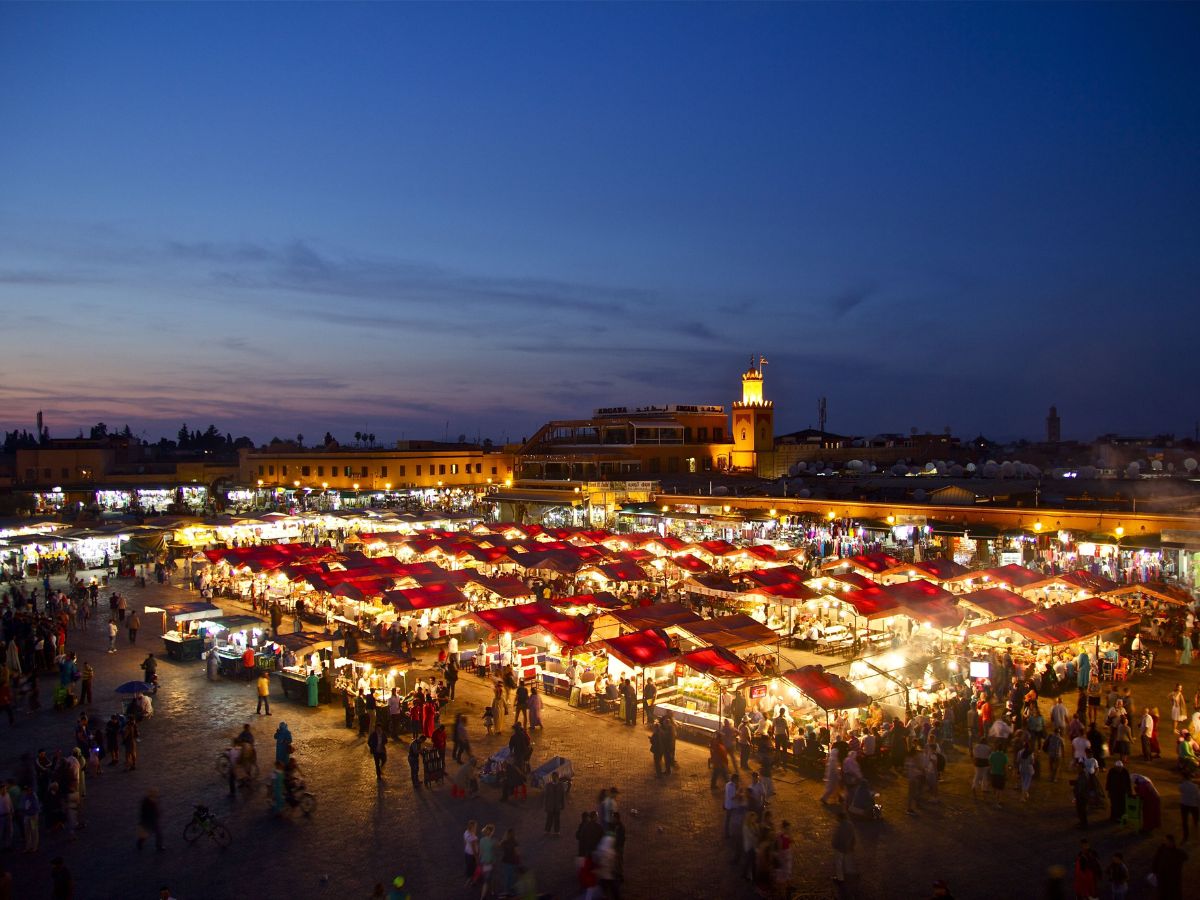
Marrakech is the most popular city in Morocco with European tourists with a number of cheap flights going in and out of it on a daily basis. As such, it is more touristy than a lot of the other cities but it is certainly an essential stop on any Morocco travel route.
It’s a bit like two completely different cities in one with the ancient medina still a mysterious maze of narrow passageways and colourful stalls and shops. There is an array of souks, squares, museums, mosques and palaces to visit so you’ll need a few days in town for sure. Visits to one of the many hammams for traditional massages and spa treatments are popular while accommodation choices include stays in typical Moroccan Riads, which can be a wonderful experience in their own right.
For a complete contrast, head to the modern Gueliz district which feels more like Europe with high-end restaurants and larger department stores. Another nice option is to take a day trip to Amizmiz, a nearby town in the High Atlas Mountains with a large Berber Souk every Tuesday.
Getting from Marrakech to Essaouira: This is a really popular route with visitors to Morocco so buses are relatively frequent and take roughly 3 hours usually costing around 7 Dollars/Euros.
10. Essaouira
Morocco has tried to develop a few coastal resorts in recent years with varying levels of success but by far the most charming remains Essaouira. As an 18th Century fortified town, it has plenty of interesting history and its unique coastal location gives it a different climate and feel to the other destinations on this Morocco backpacking route. The beach dominates life here although high Atlantic winds mean kitesurfing, windsurfing and other water sports are more popular than swimming and relaxing.
You may need to return to Marrakech to leave Morocco although there is a small airport in Essaouira with irregular but direct flights to a few European cities including London, Brussels and Marseille.
Morocco Map & Itinerary Overview
Our Morocco backpacking route starts in Tangier and ends in Essaouira, although it could just as easily be done in reverse.
Following the order above, one option would be to first cross from Spain to Morocco with ferries connecting the Spanish port of Algeciras with Tangier. The fastest services take just 30 minutes. Flying into Malaga may also be a good option if you’re coming from other parts of Europe and want to sample a bit of Southern Spain too. You could easily combine this itinerary with our backpacking route for Spain and Portugal.
However the most common way to get to/from Morocco from Europe is via budget airlines like Ryanair and Easyjet. Both have an abundance of cheap flights from right across the continent to cities in Morocco including Fez, Marrakech, Nador, Agadir and Tangier. If you’re coming from further afield then Casablanca Mohammed V International Airport is your most likely arrival and departure point and it is one of the busiest airports in Africa.
Morocco Backpacking Route – How long to spend in each place?
| Order | Destination | Suggested Time |
| 1 | Tangier | 1-2 Days |
| 2 | Chefchaouen | 2-3 Days |
| 3 | Meknes | 1-2 Days |
| 4 | Fez | 2-3 Days |
| 5 | Merzouga | 2-4 Days |
| 6 | Tinghir & Todra Gorge | 1-2 Days |
| 7 | Ouarzazate | 1-2 Days |
| 8 | Aït-Benhaddou | 1 Day |
| 9 | Marrakech | 2-4 Days |
| 10 | Essaouira | 2-3 Days |
Getting around Morocco is cheap and easy with one of the most extensive train networks in Africa and plenty of regular bus and rail connections, many of which are surprisingly fast. This helps make Morocco a good country for backpacking. You can book train and some bus tickets online by the ONCF website or easily on the day at stations. The main bus companies that travellers tend to use are Supratours and CTM, although neither website seems to work well so you may still find it easier to buy tickets in person.
More local-geared buses also run many of the connections on this route but info is harder to find and almost always in Arabic so it’s difficult for foreigners to use unless you speak the language. In and around cities, shared taxis are the cheapest way to get around although you may be the victim of minor overcharging as a foreigner.
Our suggested itinerary is based on spending 3 weeks in the country which should be enough days in Morocco for anyone looking to visit a variety of different destinations and experience many of the country’s different faces. However you could easily spend one month in Morocco and travel to a few more places. Other Morocco travel ideas may be to dive deeper into the spectacular mountain regions or visit a few more cities as this itinerary doesn’t feature the capital Rabat or the largest city which is Casablanca.
This Morocco itinerary was last updated in September 2022.

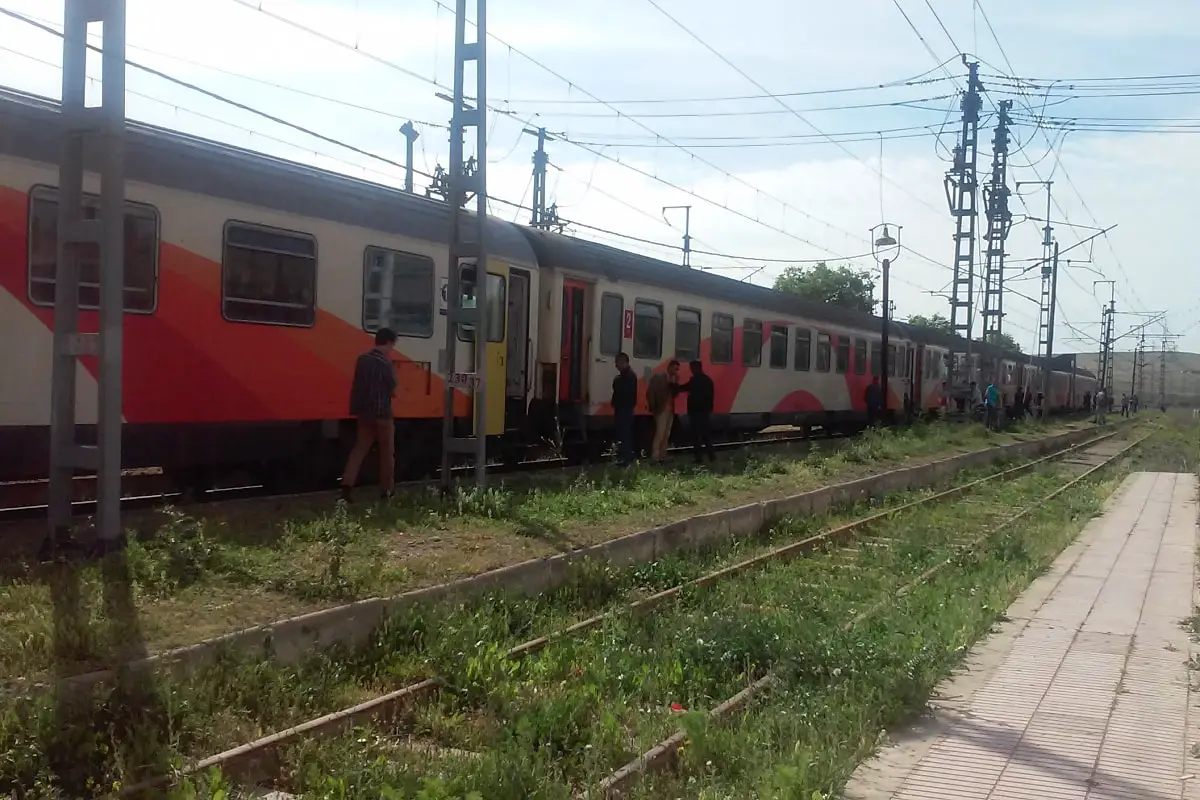
Thanks for sharing this amazing post! A great itinerary to cover the whole country and what it has to offer. Glad you had a great travel experience in Morocco
Wonderful blog. Morocco is such a beautiful place. Discover the exotic cities of Morocco from Marrakech to Tangier and indulge in unique travel experiences such as hiking the High Atlas or riding a camel into the sunset in the Sahara. Morocco, in parts, still provides authentic travel experiences lost to so many destinations.
Very nice post I love it,